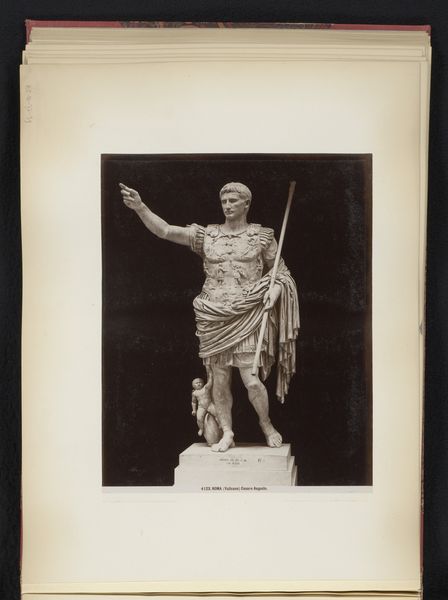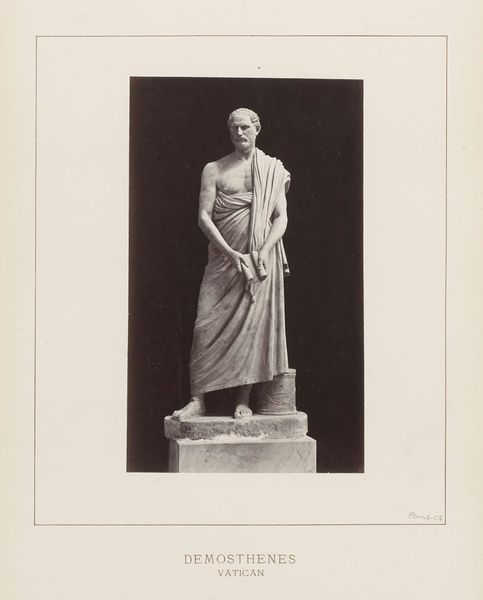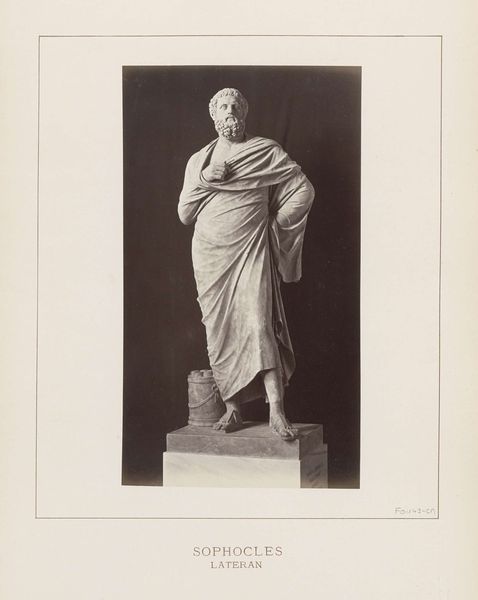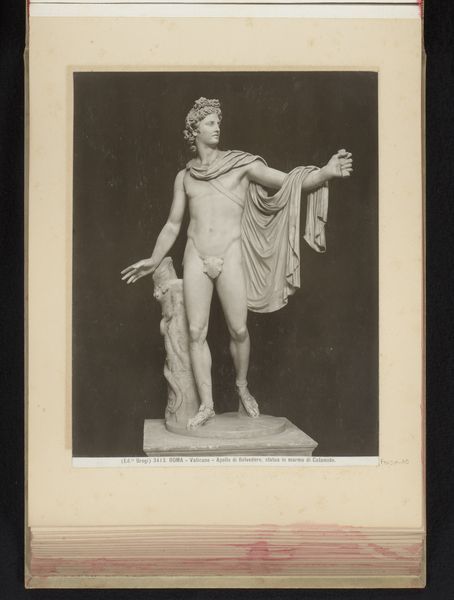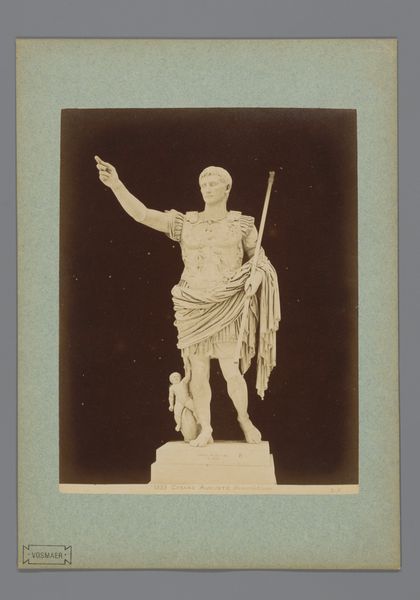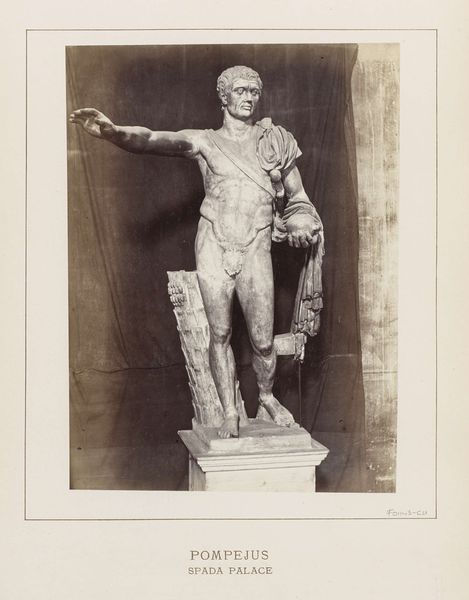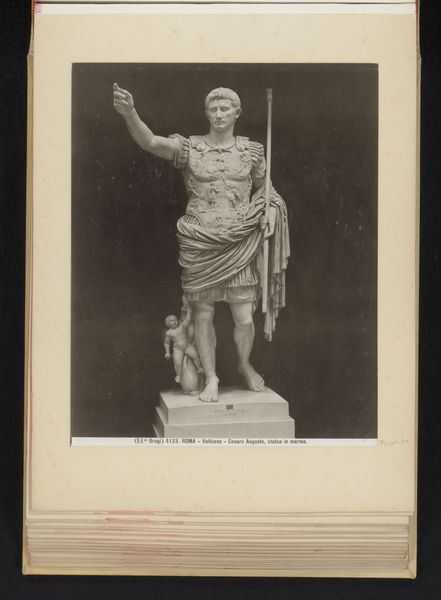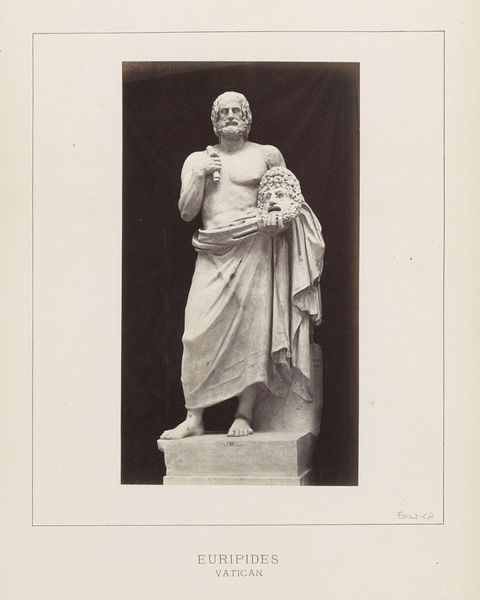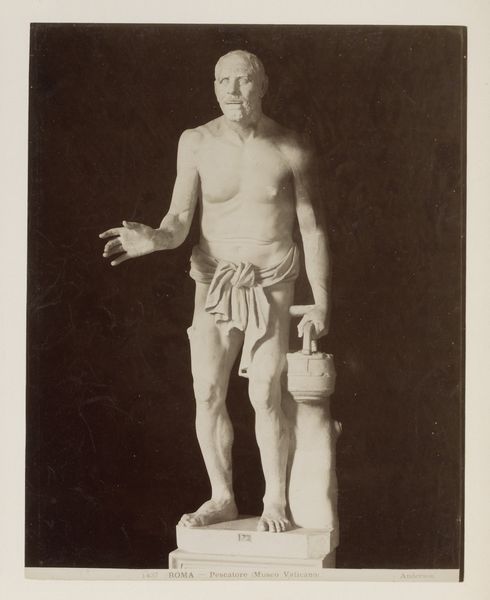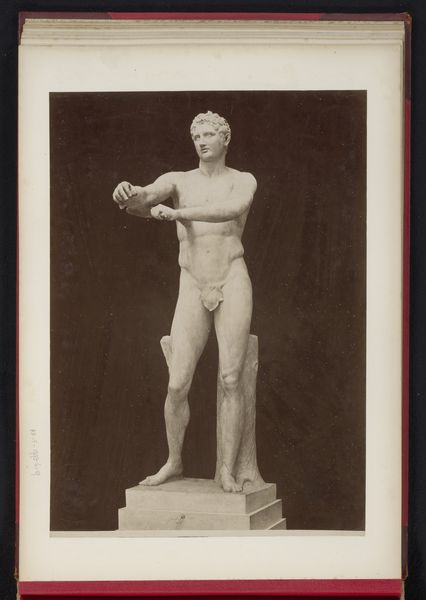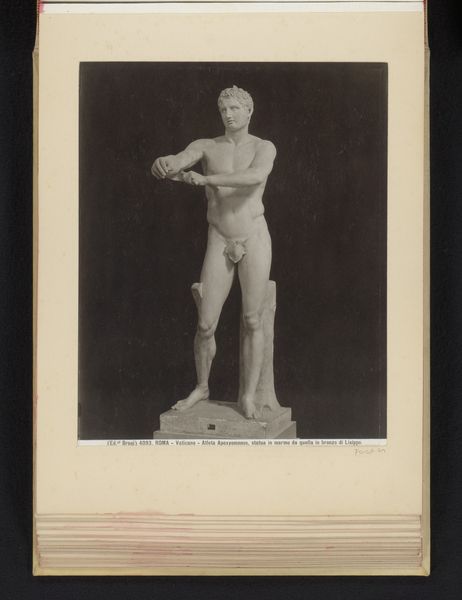
photography, sculpture, gelatin-silver-print, marble
#
portrait
#
classical-realism
#
photography
#
ancient-mediterranean
#
sculpture
#
gelatin-silver-print
#
marble
Dimensions: height 244 mm, width 170 mm
Copyright: Rijks Museum: Open Domain
Editor: So, this photograph captures a sculpture, "Augustus of Prima Porta," created sometime between 1860 and 1900. It's a gelatin-silver print of a marble sculpture, giving it this ghostly, almost ethereal quality. There's something powerful, yet slightly detached, about how the sculpture is presented here. What are your initial thoughts when you see this image? Curator: The "Augustus of Prima Porta," even in photographic reproduction, continues to exert its carefully crafted influence. This isn't just a portrait; it's a potent symbolic construct, an idealized representation designed to convey very specific messages. Think about the raised hand: what does that gesture signify across cultures, even now? What enduring idea is carried forth by his heroic stance and youthful image despite being the age when this sculpture was made? Editor: I see what you mean. The gesture seems very deliberate, projecting authority. But is the Cupid figure at his leg doing the same? Curator: Exactly! It’s Cupid riding a dolphin, connecting Augustus to the divine—Venus, his supposed ancestor. Note the breastplate, elaborately decorated, acting as a kind of historical and political map, visually narrating Augustus’s accomplishments, most importantly the return of the Roman Eagle, lost to the Parthians. All carefully constructed imagery to cement his legacy and connect him to a specific lineage. What cultural values does that convey? Editor: So it's like a carefully constructed visual language aimed at controlling the narrative around his rule. It really speaks to how leaders throughout history have used imagery to shape public perception. It seems both simple and quite manipulative. Curator: And this photograph, capturing a reproduction, allows that language to endure, to be reinterpreted. What does its continued existence in various mediums mean about us? About our own continuous reinterpretation of history? Editor: I hadn’t considered it that way, as part of this long chain of symbolic representation through images. That adds another layer of complexity. Thank you!
Comments
No comments
Be the first to comment and join the conversation on the ultimate creative platform.
